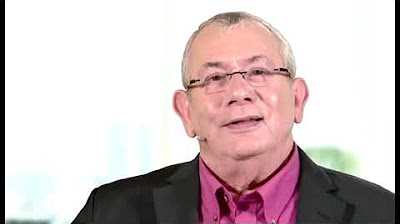Brilliant Customer Service - How to Impress your Customers! - Chapter 4
Summary
TLDRIn this chapter of the customer service program, Tony Hunt emphasizes the importance of handling difficult or angry customers effectively. He points out that only a small percentage of dissatisfied customers actually complain, and those who don't may still spread negative word-of-mouth. The chapter introduces a six-step strategy for addressing complaints, which includes apologizing, fixing the issue, adding a token gesture, confirming satisfaction, and begging for repeat business. The discussion also covers the significance of body language and tone of voice, and provides guidance on dealing with different types of customer behaviors, from emotional outbursts to quiet assassins. The key takeaway is to treat complaints as opportunities for improvement and to turn dissatisfied customers into ambassadors.
Takeaways
- 😀 Customer service professionals should relish dealing with difficult or angry customers as it's a great skill to have.
- 🔍 Only about 4% of dissatisfied customers actually complain; many others will not return but may spread negative word-of-mouth.
- 📈 Complaints are valuable feedback that can help improve customer service quality and reduce the need for future complaints.
- 📊 70% of customers leave due to feeling they have been badly treated, highlighting the importance of excellent customer service.
- 🤝 A six-step customer complaint strategy is suggested: apologize, offer to fix the problem, take responsibility, add something for inconvenience, confirm satisfaction, and beg for repeat business.
- 🗣️ Active listening and empathy are crucial in understanding and resolving customer dissatisfaction.
- 👀 Body language and tone of voice are key in communicating understanding and empathy to the customer.
- 🚫 Avoid phrases that can annoy customers, such as citing company policy as an excuse for inaction.
- 🤝 Use phrases that show understanding and a commitment to resolving the issue to build trust with the customer.
- 🧠 Different types of customer behavior require different approaches: deal with emotions first for emotionally driven customers, and focus on the issue for task-driven customers.
Q & A
What is the main focus of chapter four of the customer service program?
-The main focus is on how to deal with difficult or angry customers, emphasizing the importance of this skill for customer service professionals.
Why is it crucial to address customer complaints?
-Customer complaints are crucial to address because only a small percentage of dissatisfied customers actually complain, and those who don't may simply leave and spread negative word-of-mouth, potentially damaging the business without the company's knowledge.
What percentage of customers leave due to perceiving rude or unhelpful service?
-50% of customers leave due to perceiving rude or unhelpful service.
What is the significance of treating a complaint as a professional opportunity?
-Treating a complaint as a professional opportunity is significant because it allows for improving service quality by addressing the issue and potentially turning a dissatisfied customer into an ambassador for the company.
What is the six-step customer complaint strategy mentioned in the script?
-The six-step strategy includes: 1) Apologize without admitting liability, 2) Offer to fix the problem, 3) Fix it or take responsibility for ensuring it is fixed, 4) Add something as a token for the inconvenience, 5) Confirm complete satisfaction after fixing the problem, and 6) Beg for repeat business.
Why is it important to collect information when fixing complaints?
-Collecting information when fixing complaints helps in understanding the root cause of dissatisfaction, which can then be used to improve the quality of customer service and reduce the need for future complaints.
What role do body language and tone of voice play in customer service interactions?
-Body language and tone of voice play a significant role as they convey 55% and 38% of the message respectively. They are crucial in reading emotional responses and in showing empathy and understanding to the customer.
How should customer service professionals respond to emotionally driven behavior in complaints?
-They should first address the customer's feelings with empathy, make them feel comfortable, and then move on to resolving the issue at hand.
What is the approach to handling task-driven behavior in customer complaints?
-For task-driven behavior, the focus should be on resolving the issue first, not the feelings. It involves assertiveness, dealing with the problem directly, and involving the customer in the decision-making process for the solution.
What is the 'Etch A Sketch' approach and when should it be used?
-The 'Etch A Sketch' approach is a mental technique used to let go of difficult customer interactions by metaphorically 'shaking off' the negativity and moving on. It should be used when complaints become overwhelming to maintain a positive and professional attitude.
How can customer service professionals use feedback from complaints to improve?
-Feedback from complaints can be seen as 'The Breakfast of Champions,' a positive opportunity to practice and improve soft skills, empathize with customers, and enhance the overall customer service experience.
Outlines

此内容仅限付费用户访问。 请升级后访问。
立即升级Mindmap

此内容仅限付费用户访问。 请升级后访问。
立即升级Keywords

此内容仅限付费用户访问。 请升级后访问。
立即升级Highlights

此内容仅限付费用户访问。 请升级后访问。
立即升级Transcripts

此内容仅限付费用户访问。 请升级后访问。
立即升级浏览更多相关视频

Brilliant Customer Service - How to Impress your Customers! - Chapter 3

Brilliant Customer Service - How to Impress your Customers! - Chapter 2

Brilliant Customer Service - How to Impress your Customers! - Chapter 5

Customer Handling - CRM | Soft Skills | Skills Training | TutorialsPoint

PPM Pierce Pharmacy Management Handling Difficult Customers

Types Of Customers
5.0 / 5 (0 votes)
